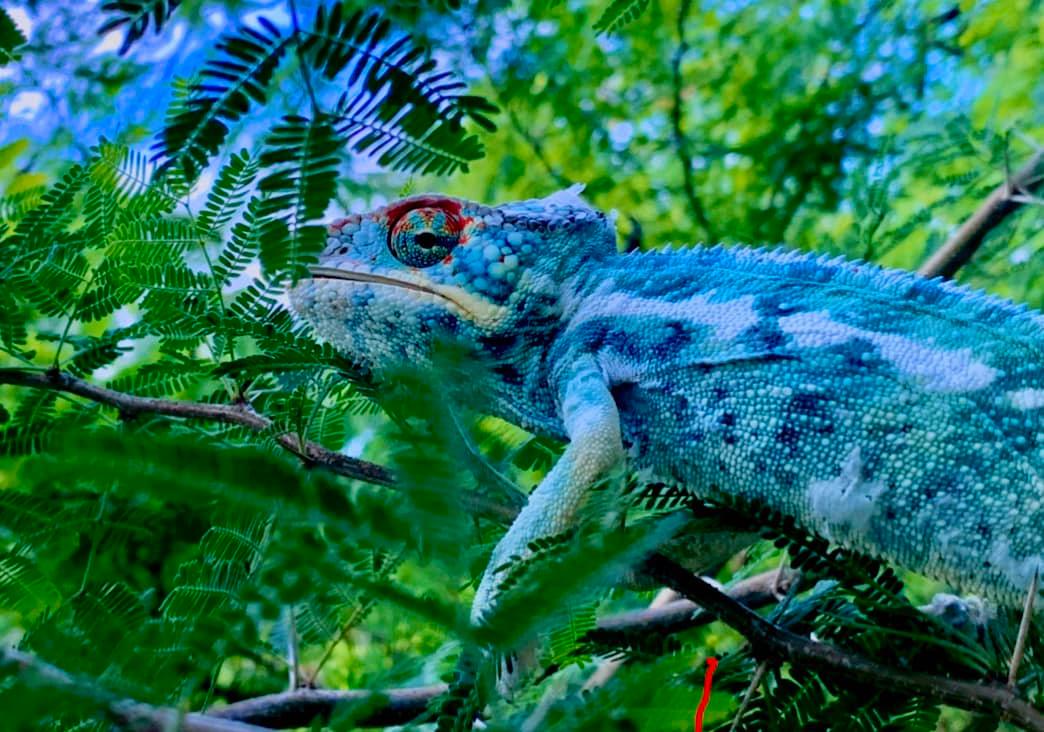Magic Of True Blue Nosy-Be Panther Chameleons Unleashed
03.12.2019
The desired "true blue" color in Nosy Be is highly valued and many breeders claim they have a breeding lineage of it...
In the wild, there are high blue and emerald green-green specimens to be found...
Everything seems to be OK...
BUT
Breeders all around the world, especially in the US, report about loss of yellow mouth angle
coloration loss, that happens often not only in further generations but already in specimens during their captivity management...
We do not know, what is the reason, it is very likely some nutrient that we do not provide in captivity, and they do not get that yellow mouth corners. (Maybe pollen and some carotenoids play here the crucial role...)
The issue is, the yellow disappears also from the throat and gingives...
AND the yellow disappears also from their bodies!!!
How do I know? There is no yellow on their bodies!
Oh, yes, it is!
The yellow is contained in their green!

Basics of the physics of colors: there are only 3 basic colors:
1. Yellow
2. Blue
3. Red
All the other colors are secondary or tertiary and are created in combining the primary colors.
GREEN is a secondary color.
It is created by combination of BLUE AND YELLOW...
So, if you remove yellow from the coloration of a green chameleon: what do you get?
A BLUE CHAMELEON!
The loss of yellow happens not only in captivity, but also in the "wild".
There is a clear tendency:
The more the environment is degraded, especially by monoculture plantations, the more the blue males are frequent!
In more natural biotopes, the blue specimens are absent.
There must be something in their food, that helps them to create the yellow. And it is missing on monoculture plantations and in captivity...
So, to be very candor: the blue Pardalis are not a lineage or color form, they are in fact malnourished specimens, that lack some component(s) in their food!
Author: Petr Nečas
